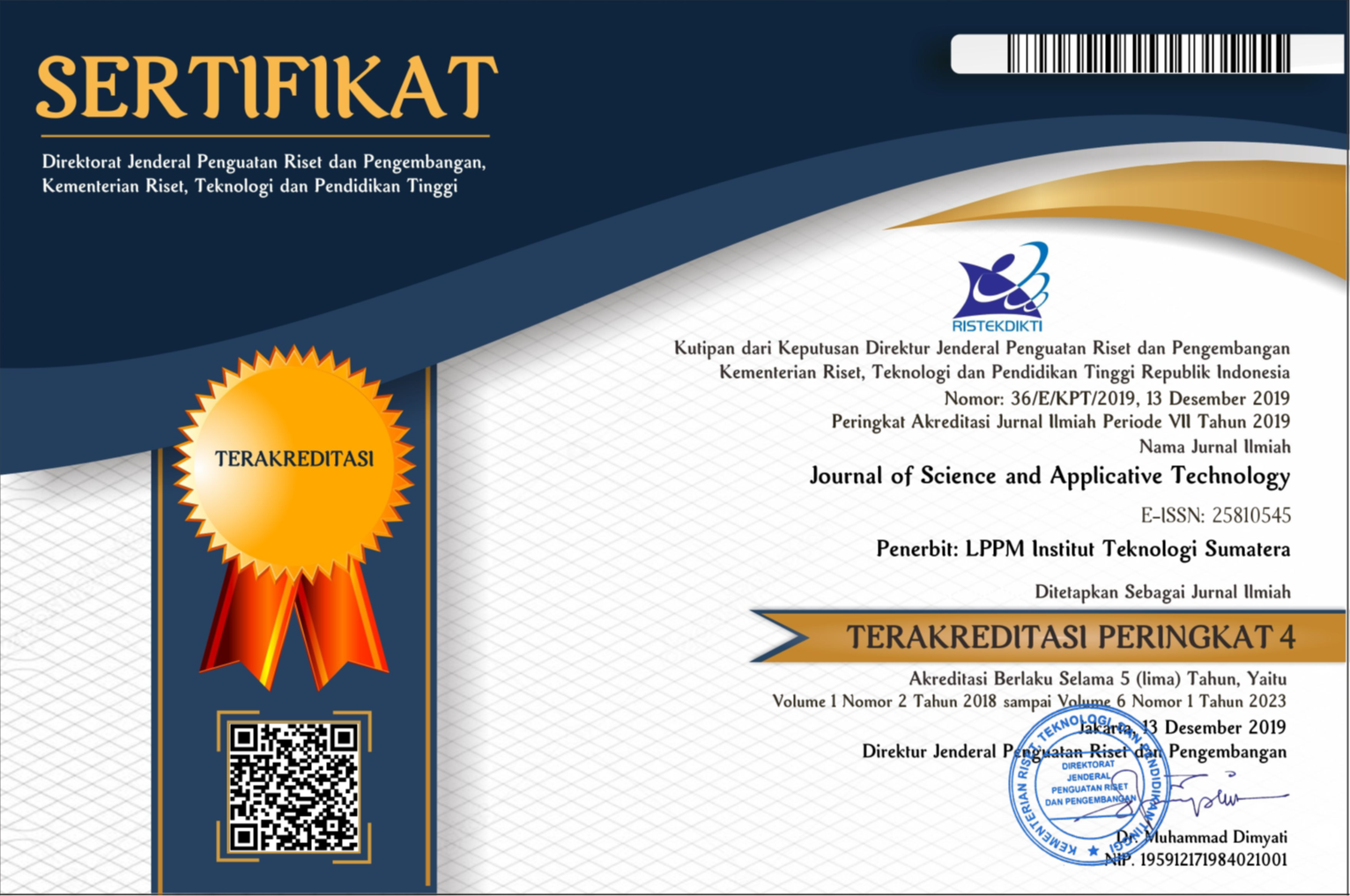Modifikasi Algoritma Kriptografi Klasik dengan Implementasi Deterministic Finite Automata melalui Partisi Pesan Asli berdasarkan Kriteria Pesan Bagian
Abstract
Classical cryptography is study of securing a secret message (plaintext) into a hidden message (ciphertext) which in the process changes each character. The process of converting plaintext into ciphertext is called encryption, the reverse process is called decryption. There is monoalphabetic algorithm, which changes each plaintext letter paired wisely with one particular letter in the ciphertext. The weakness of this algorithm is that the encryption rules can be guessed by analysing the frequency of occurrence of letters. Meanwhile, in polyalphabetic cipher, an algorithm that allows the same letter to be encrypted into different letters. One of them is the Vigenere cipher, which uses keywords that can be repeated to add to the plaintext in the computation of integer modulo. However, this algorithm can be solved using the Kasiski method, because pattern of repeating keywords. In this research, a Deterministic Finite Automata computation model is applied to partition messages before being processed with keywords. Partitions that are formed based on the criteria of message parts ending by the letter E, as letters that often appear in English text. This can increase the security of classical cryptographic algorithms, because they cannot be attacked by frequency analysis or Kasiski methods.
Downloads
References
[2] M. M. Amin, “Implementasi Kriptografi Klasik Pada Komunikasi Berbasis Teks,†Pseudocode, vol. 3, no. 2, pp. 129–136, 2017, doi: 10.33369/pseudocode.3.2.129-136.
[3] T. Limbong, “Pengujian Kriptografi Klasik Caesar Chipper Menggunakan Matlab,†Semin. Nas. Inov. dan Teknol. Inf. Sept., no. September 2015, pp. 77–80, 2015.
[4] Y. Permanasari, “Kriptografi Klasik Monoalphabetic,†Matematika, vol. 16, no. 1, pp. 7–10, 2017, doi: 10.29313/jmtm.v16i1.2543.
[5] A. Anggie, “P Rogram S Tudi D Oktor,†Pemodelan Arsit. Sist. Inf. Perizinan Menggunakan Kerangka Kerja Togaf Adm, vol. 4, no. 1, p. (halaman 2), 2018.
[6] M. Zarlis, “Implementasi Algoritma Vigenere Subtitusi dengan Shift Indeks Prima,†Univ. Sumatera Utara, pp. 149–154, 2017.
[7] A. A. Sharipbay, Z. S. Saukhanova, G. B. Shakhmetova, and N. S. Saukhanov, “Application of finite automata in cryptography,†ACM Int. Conf. Proceeding Ser., pp. 3–5, 2019, doi: 10.1145/3330431.3330452.
All the content on Journal of Science and Applicative Technology (JSAT) may be used under the terms of the Creative Commons Attribution-NonCommercial 4.0 International License.
You are free to:
- Share - copy and redistribute the material in any medium or format
- Adapt - remix, transform, and build upon the material
Under the following terms:
- Attribution - You must give appropriate credit, provide a link to the license, and indicate if changes were made. You may do so in any reasonable manner, but not in any way that suggests the licensor endorses you or your use.
- NonCommercial - You may not use the material for commercial purposes.
- No additional restrictions - You may not apply legal terms or technological measures that legally restrict others from doing anything the license permits.





















